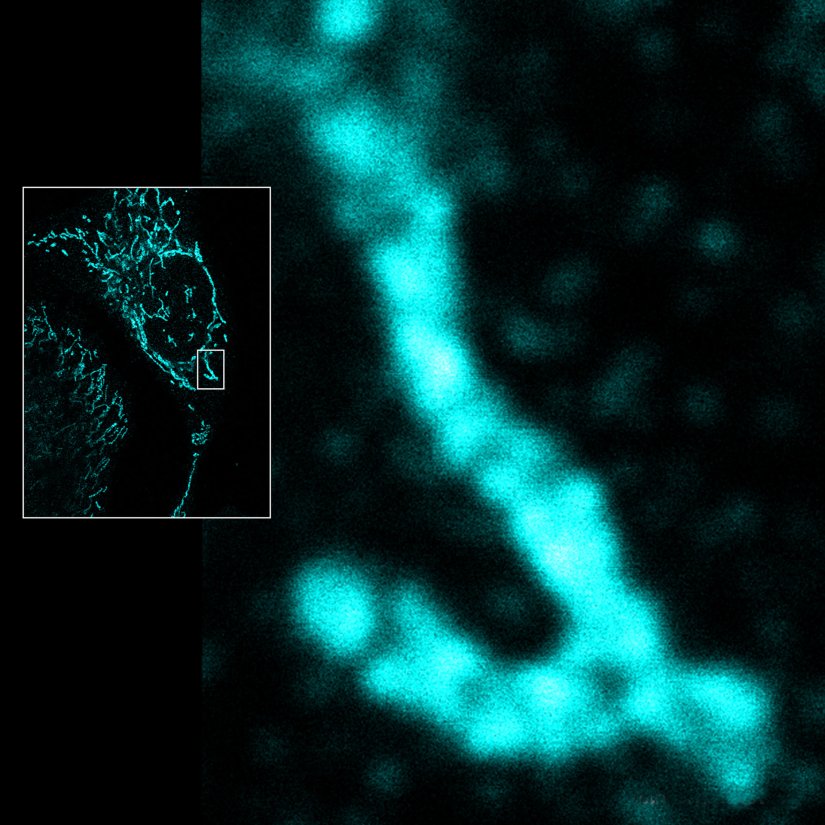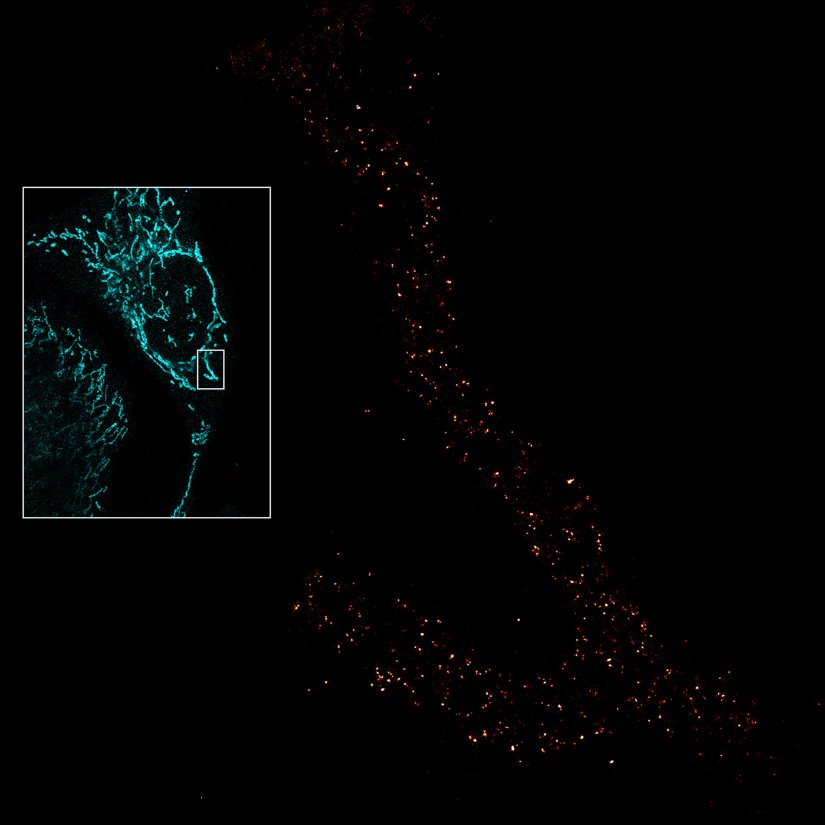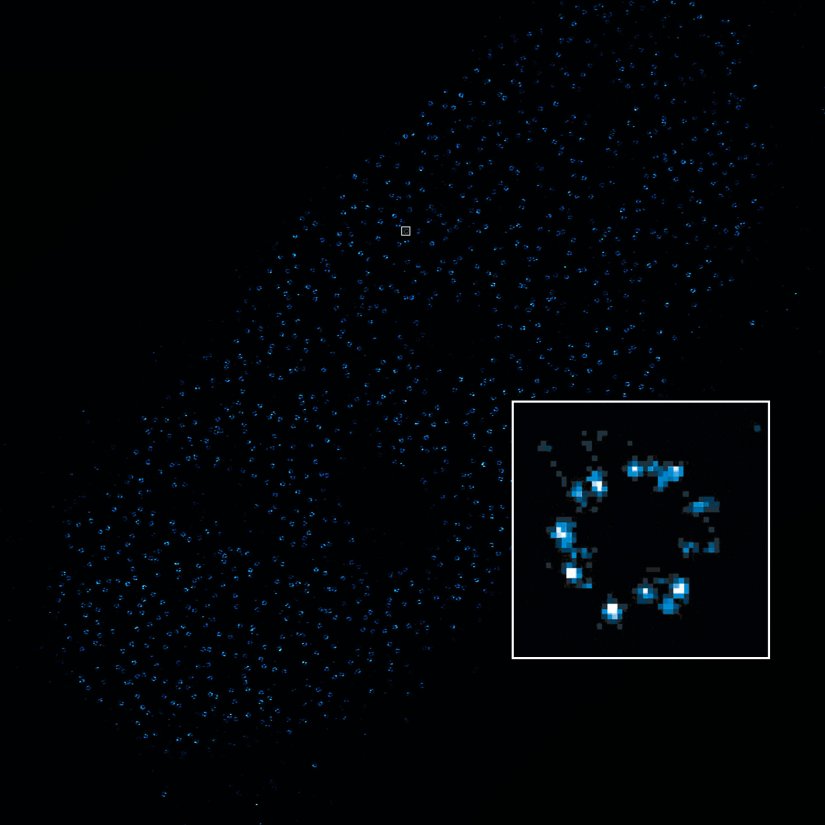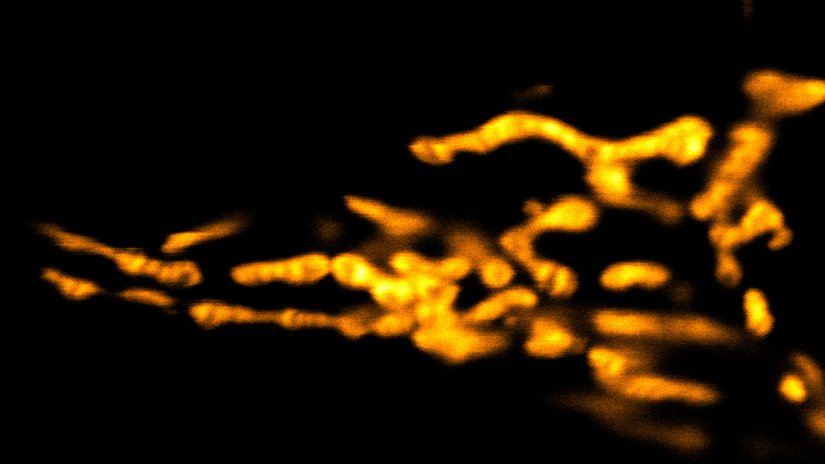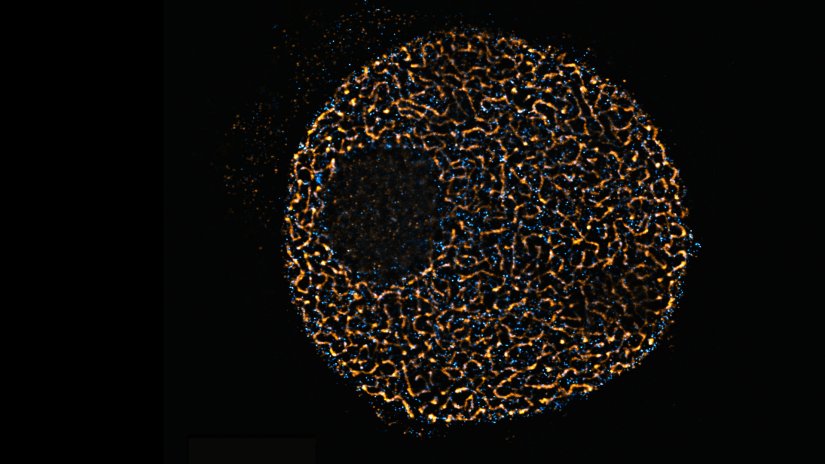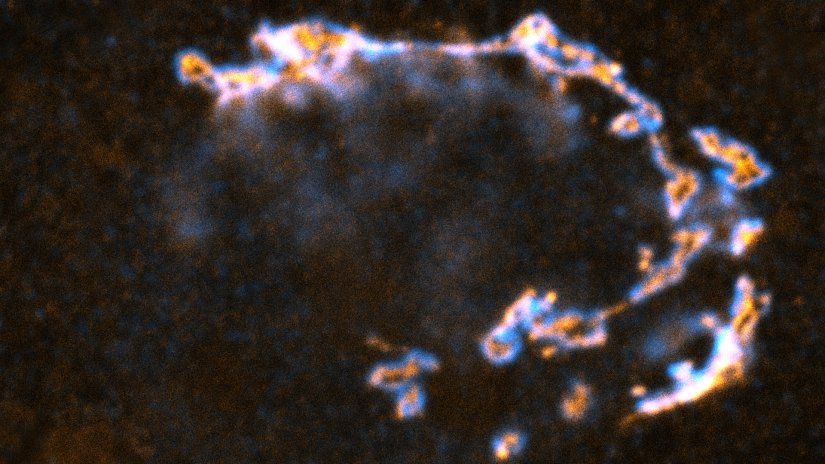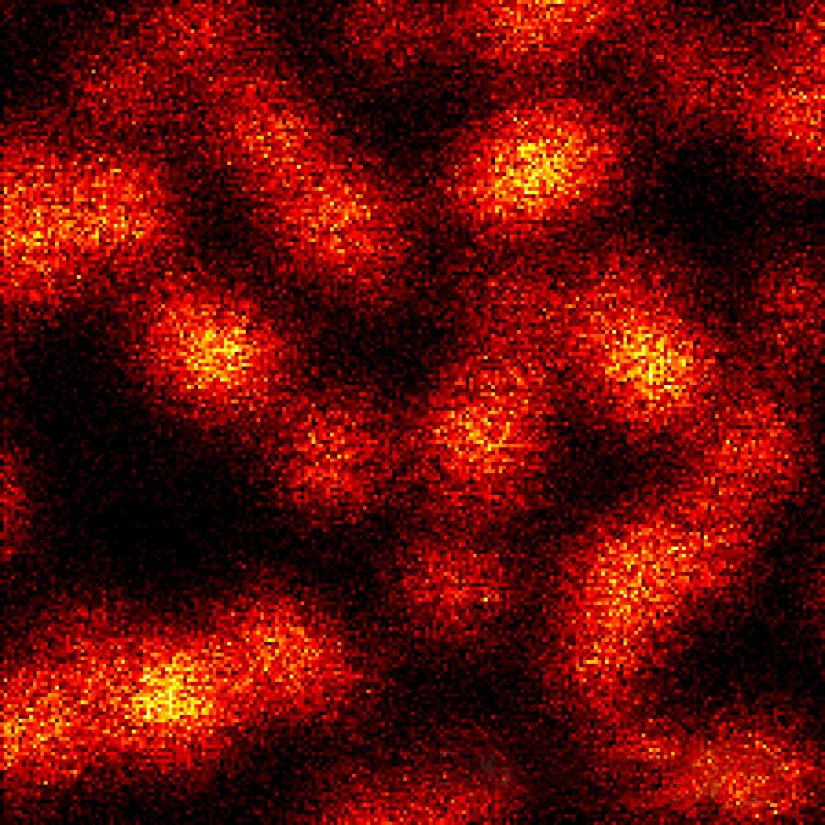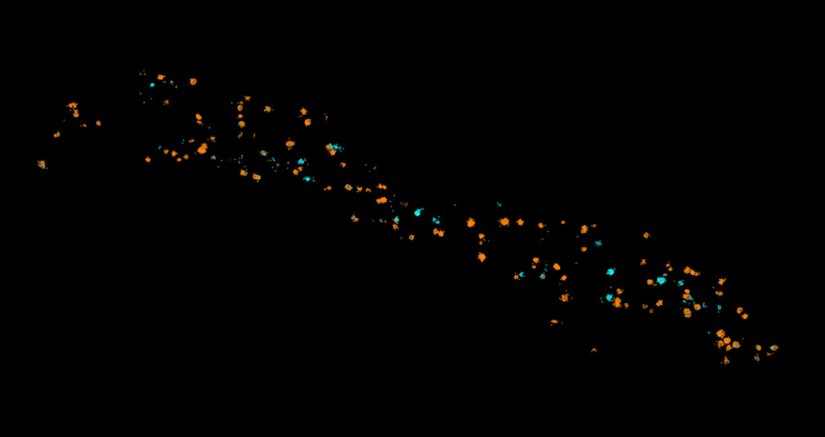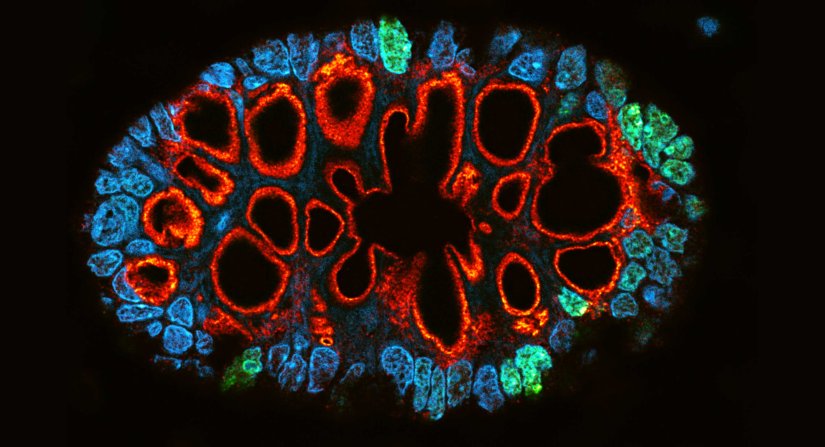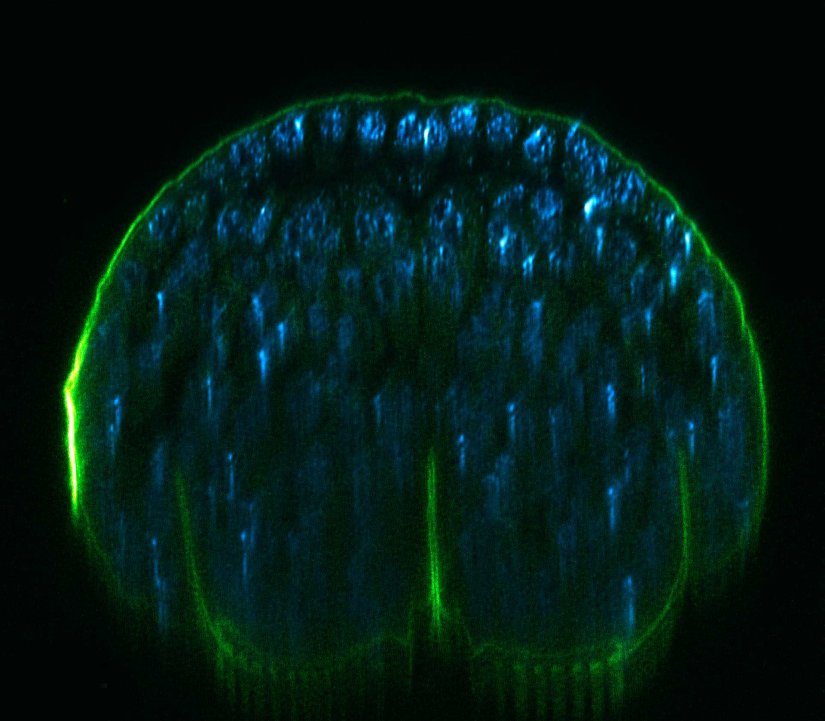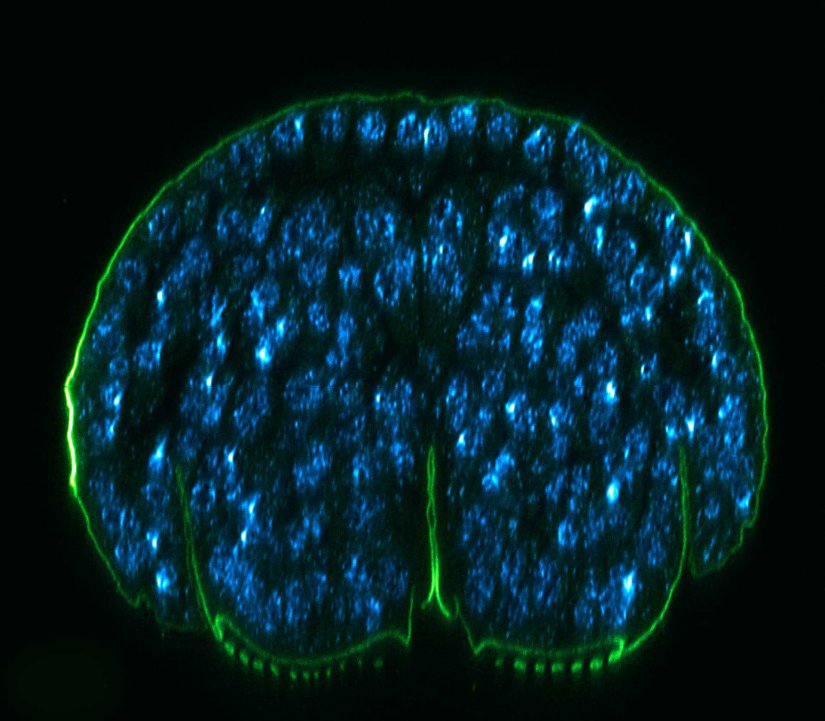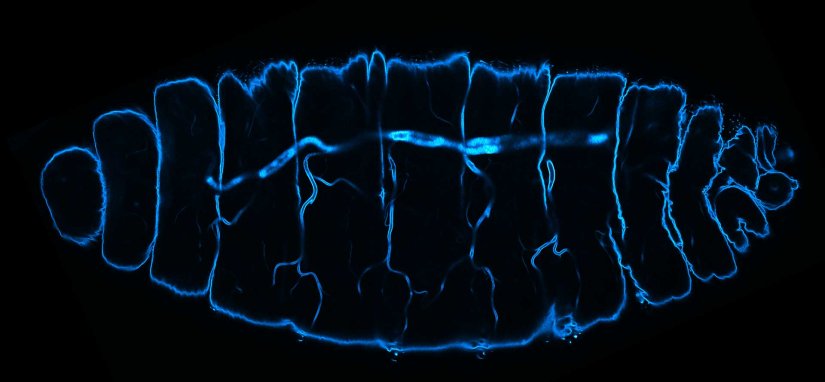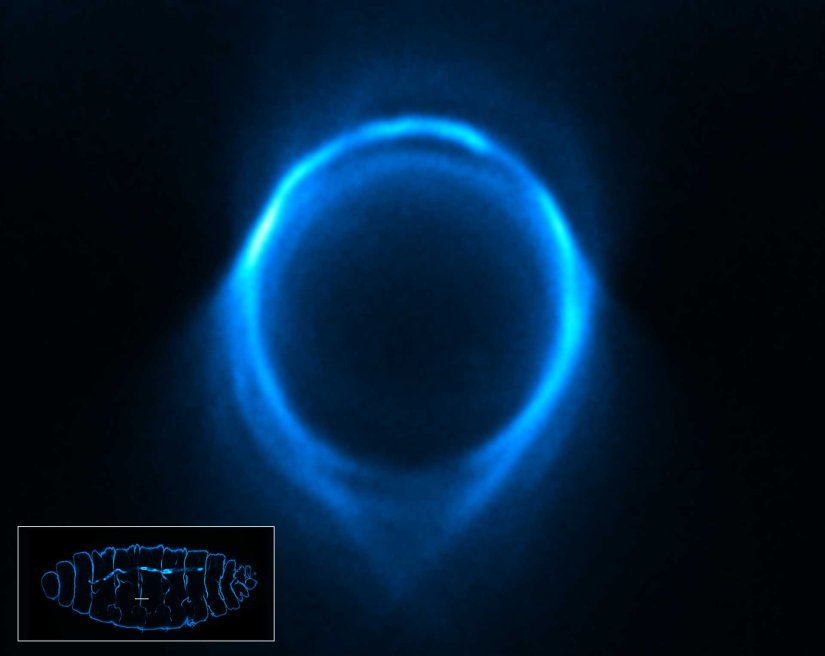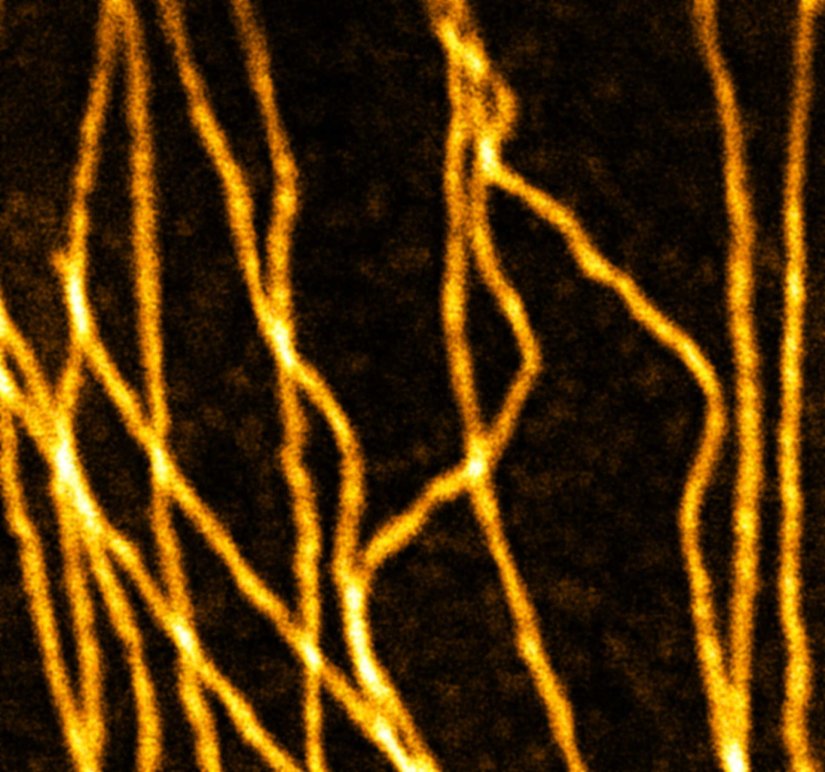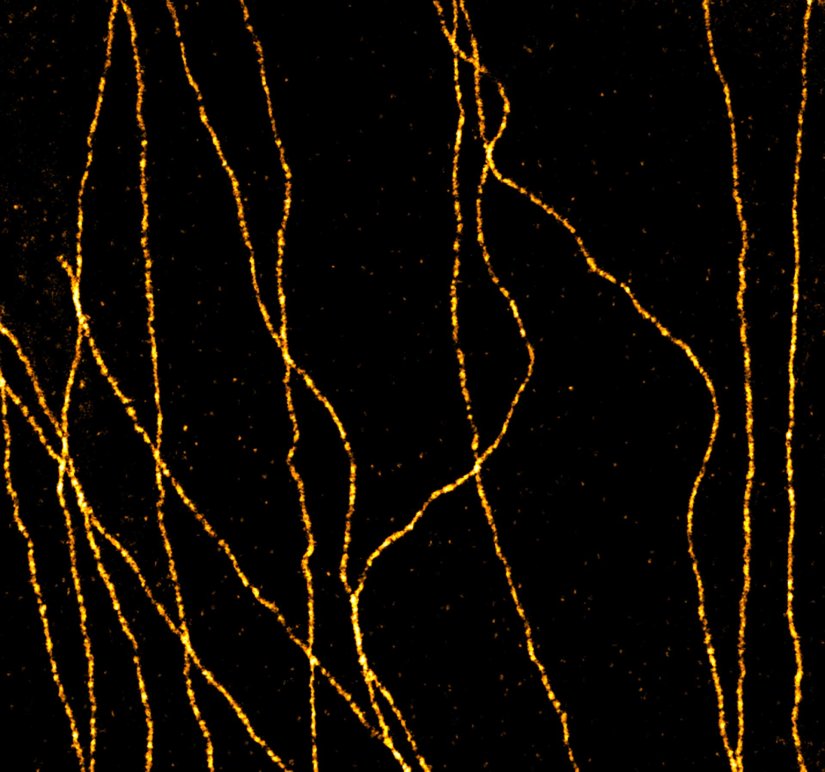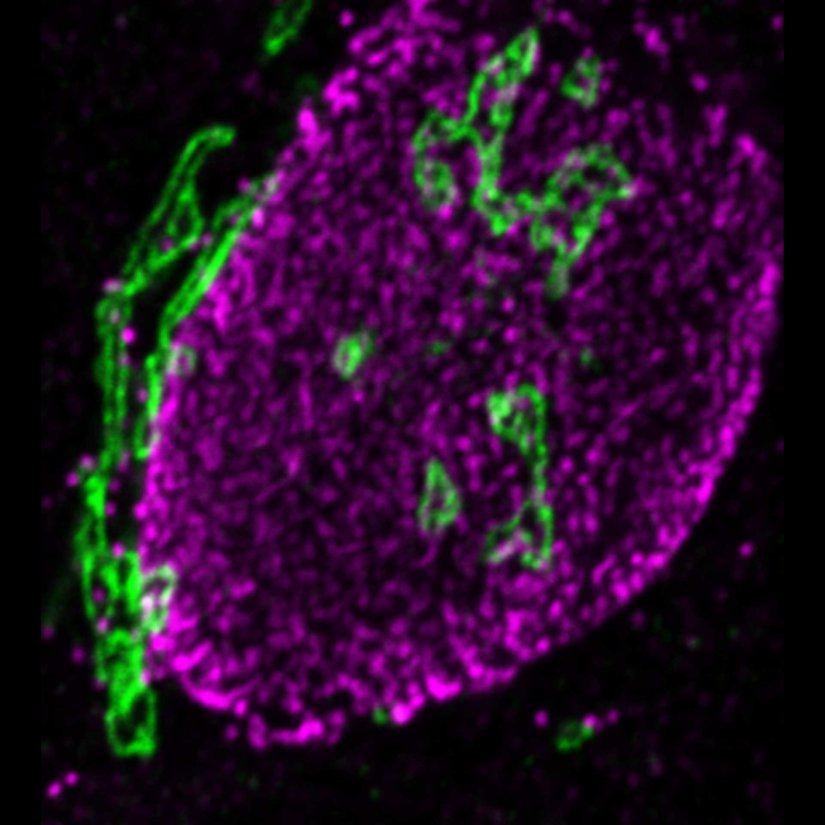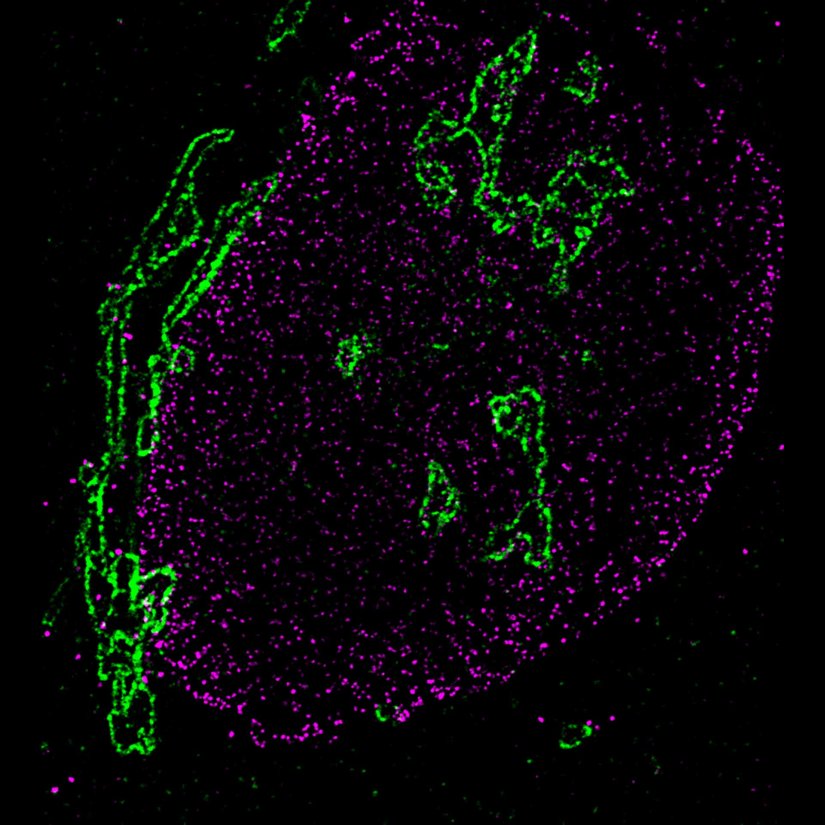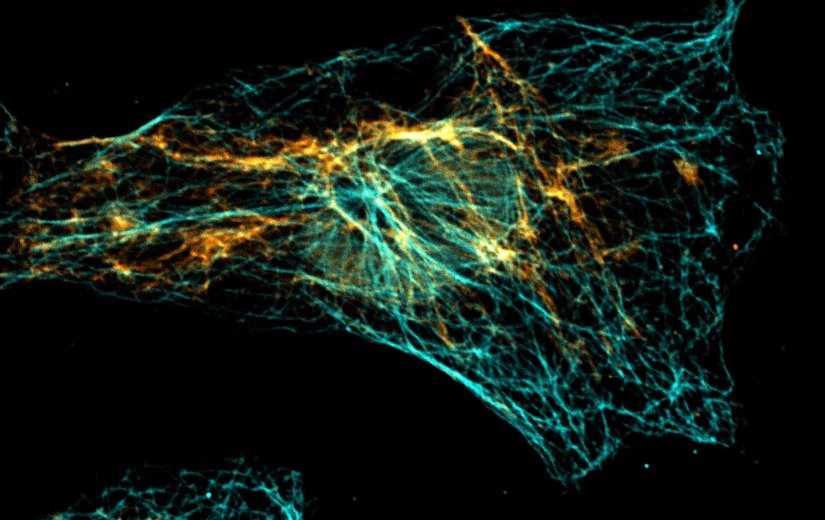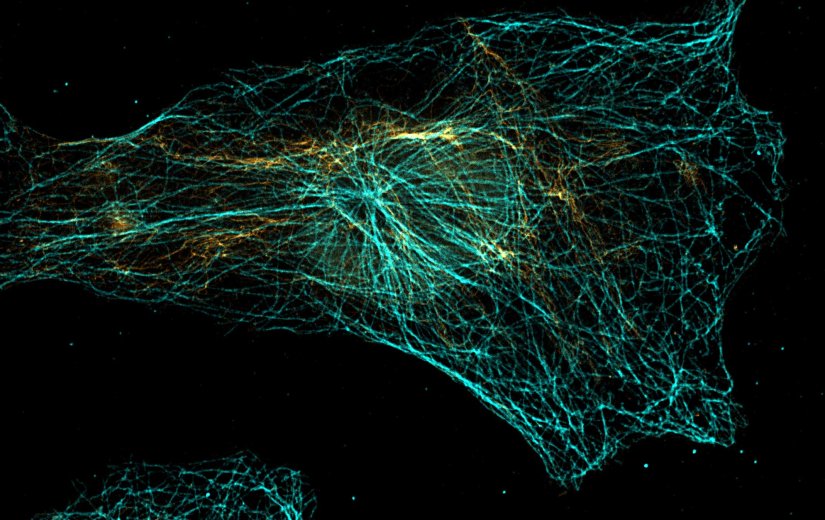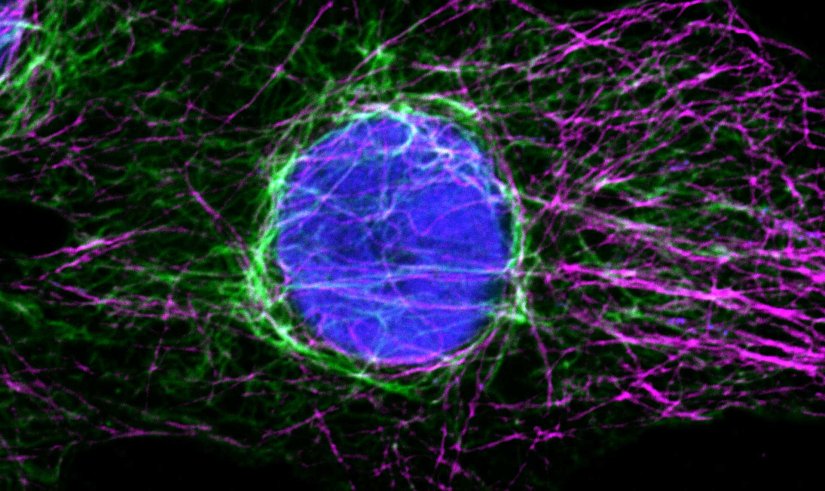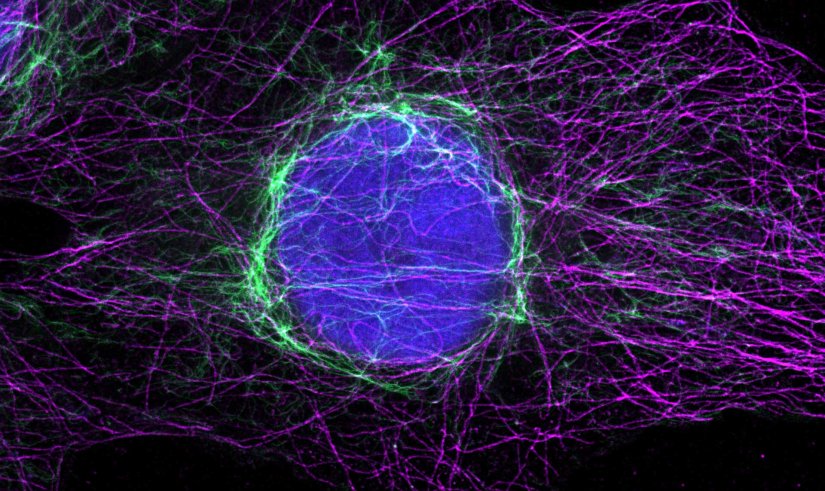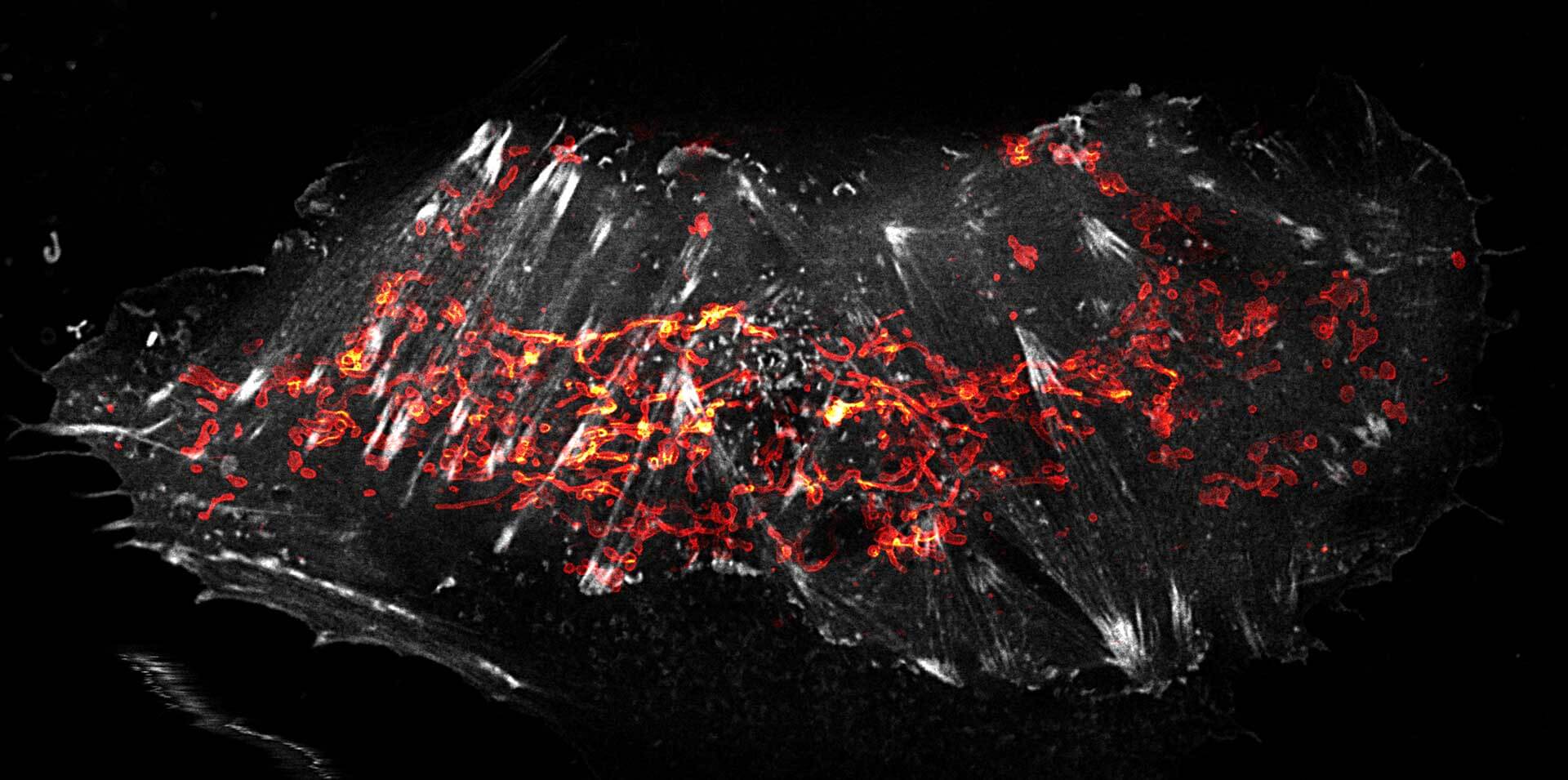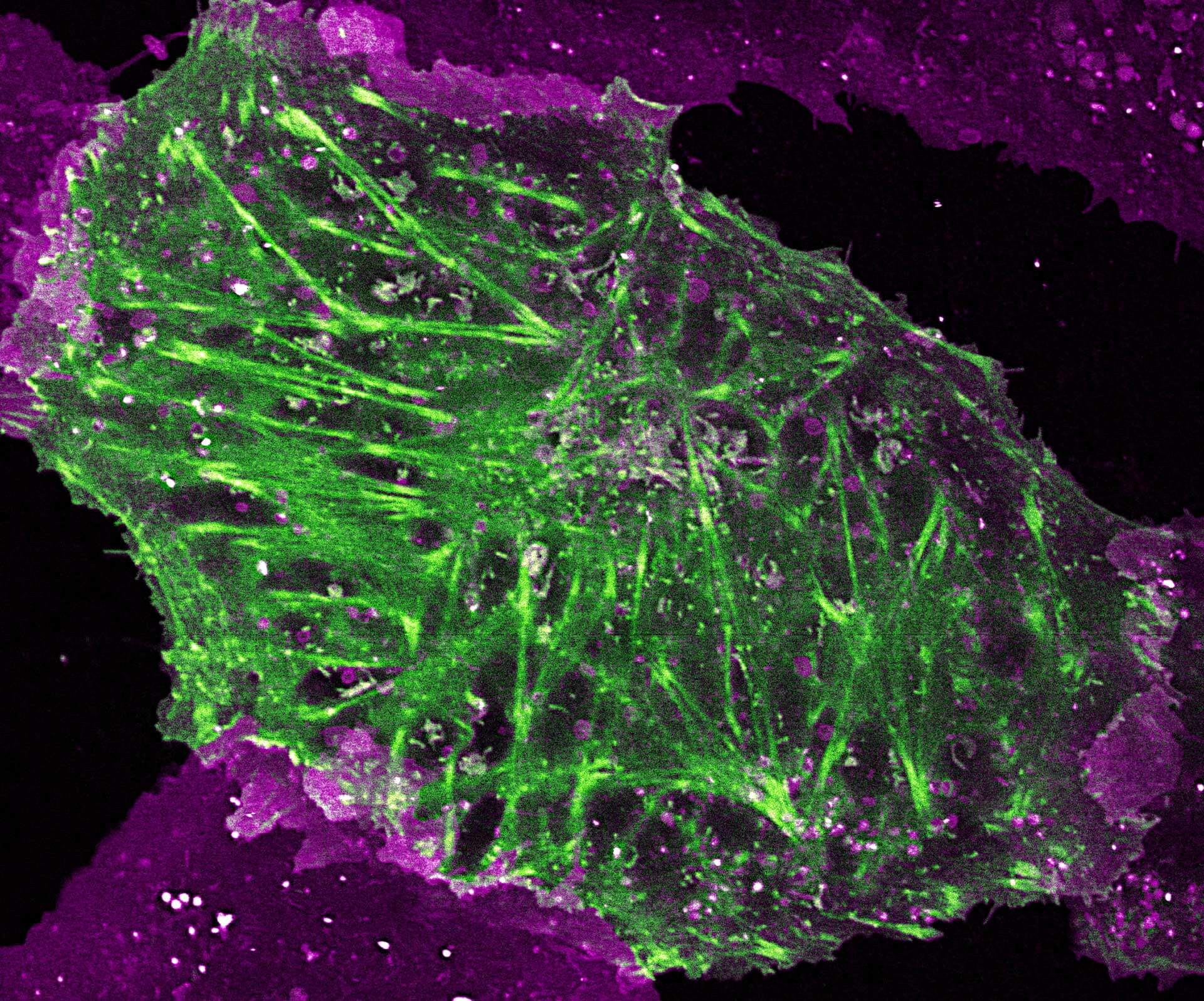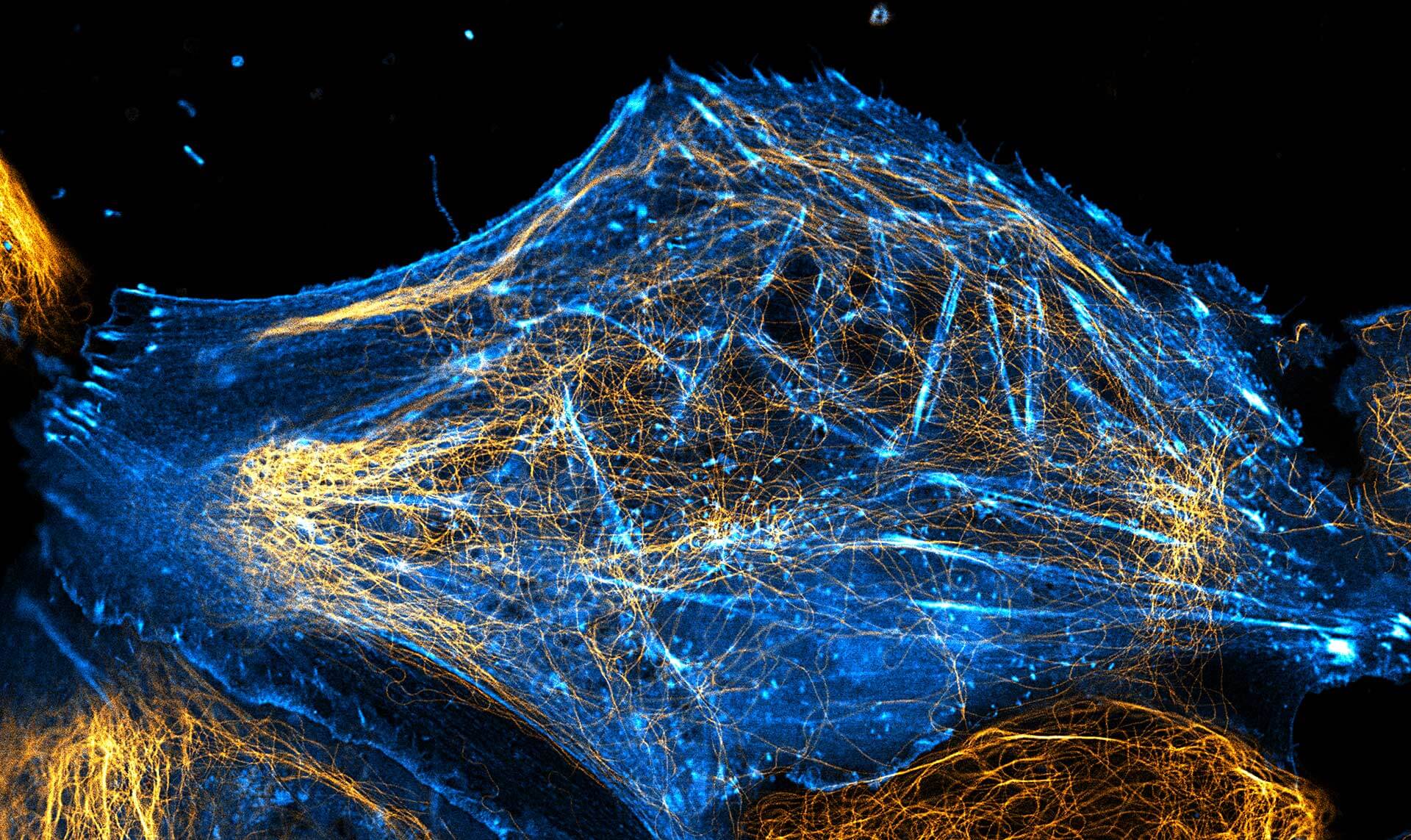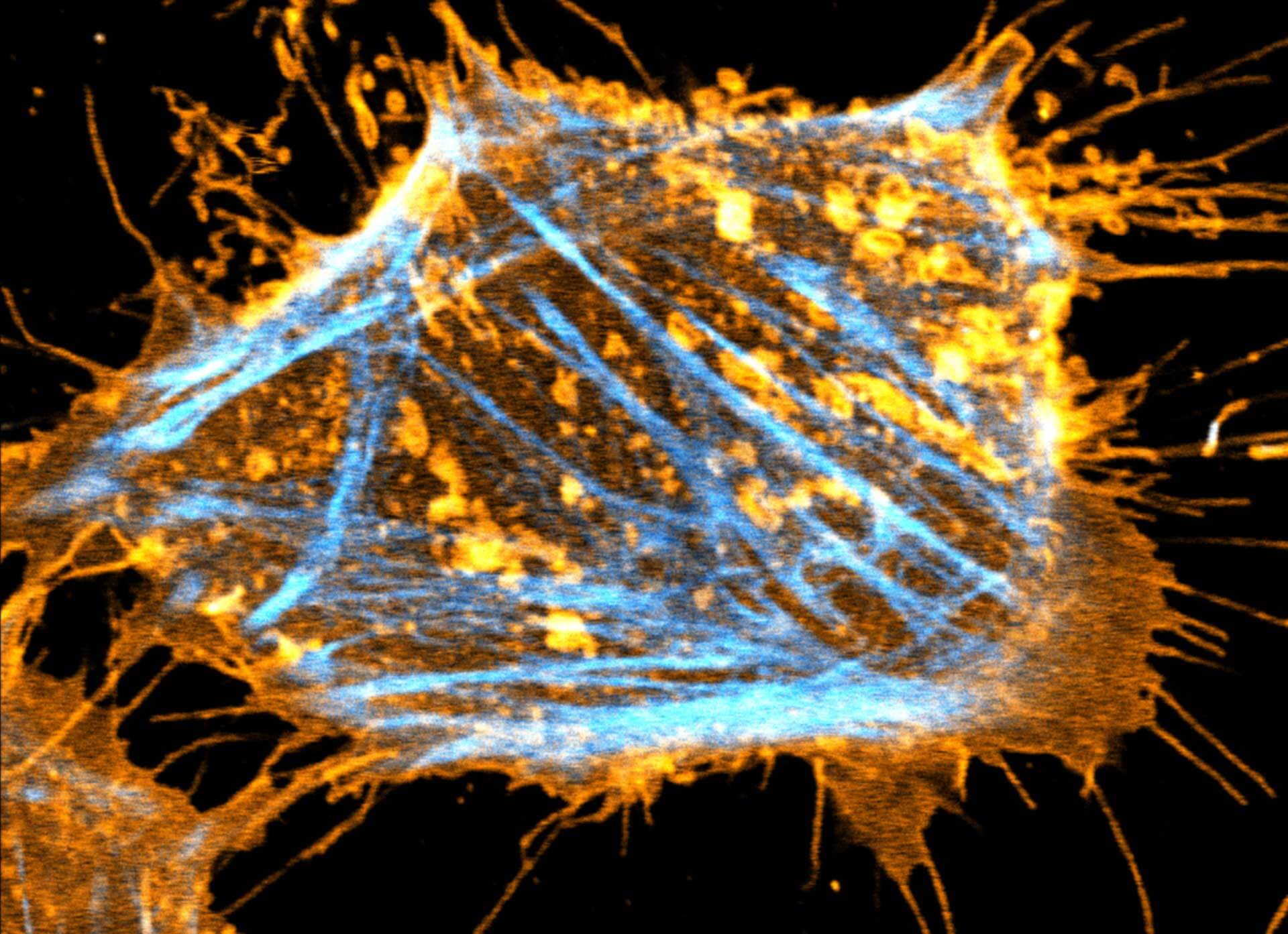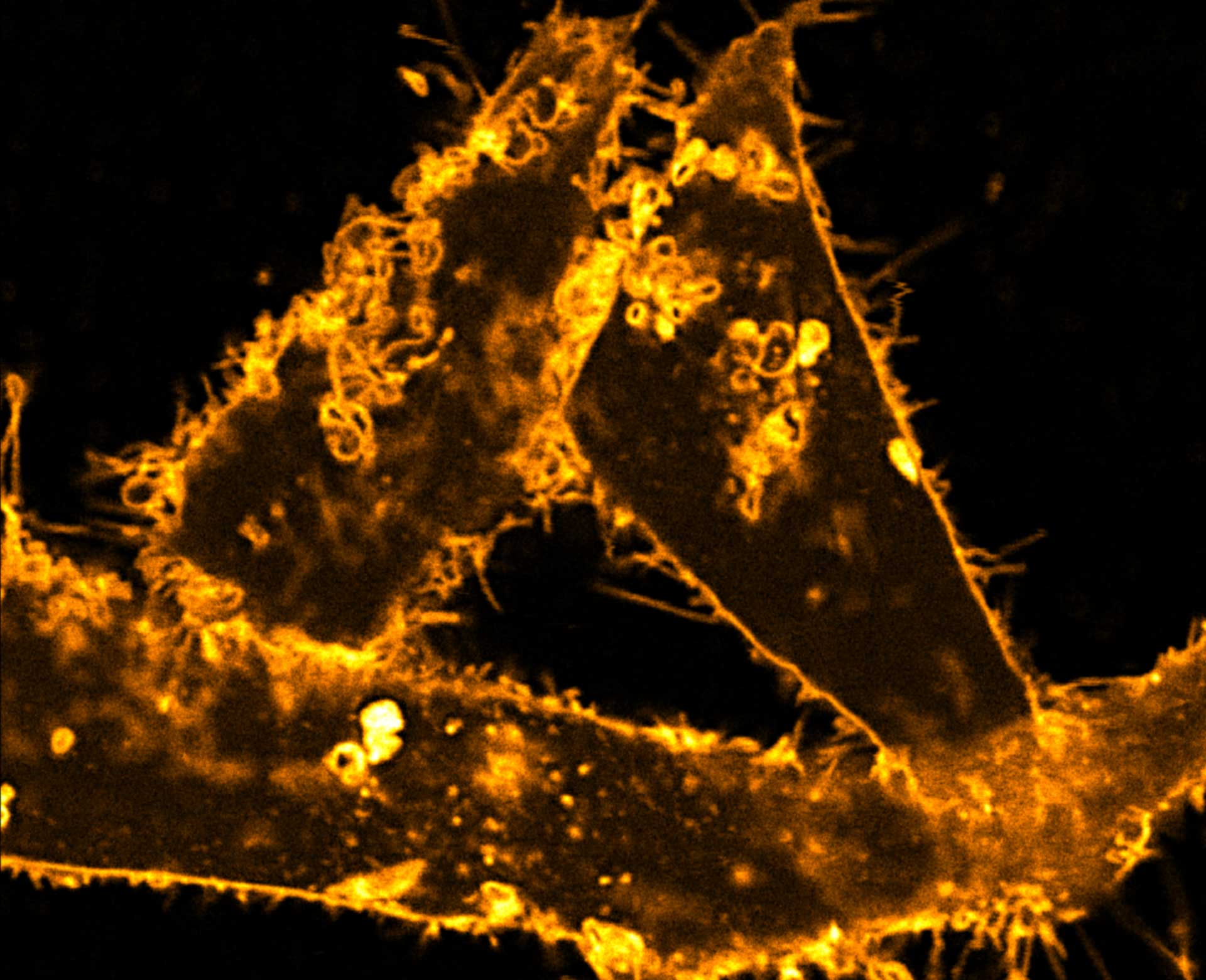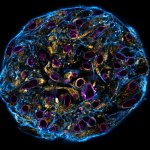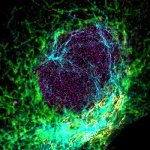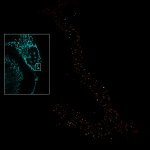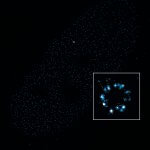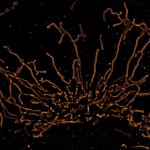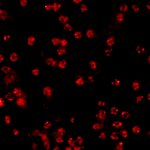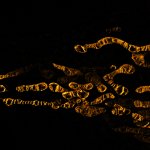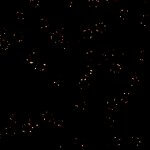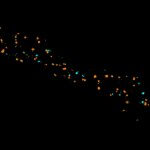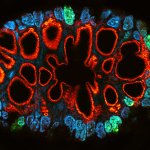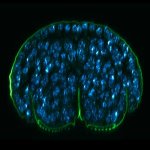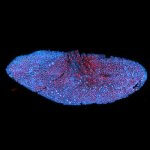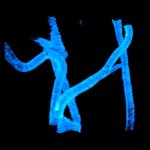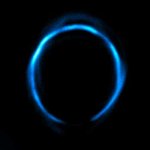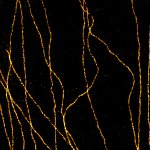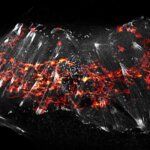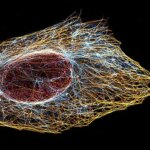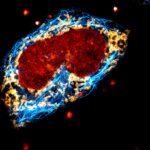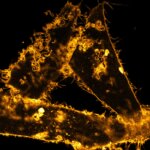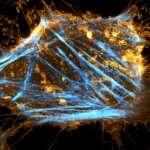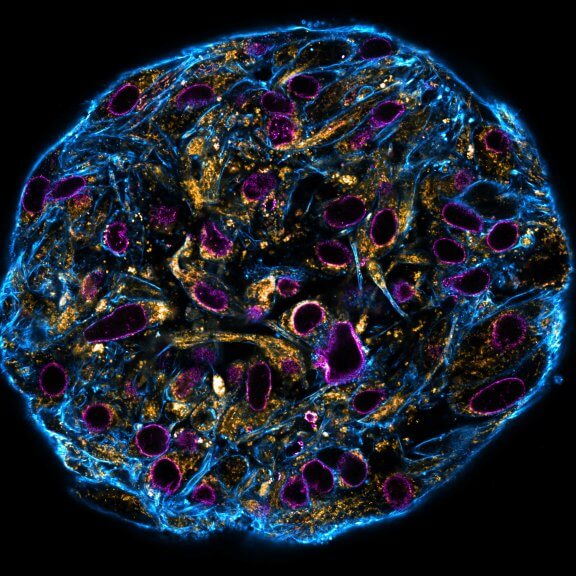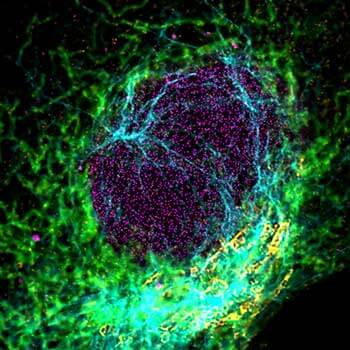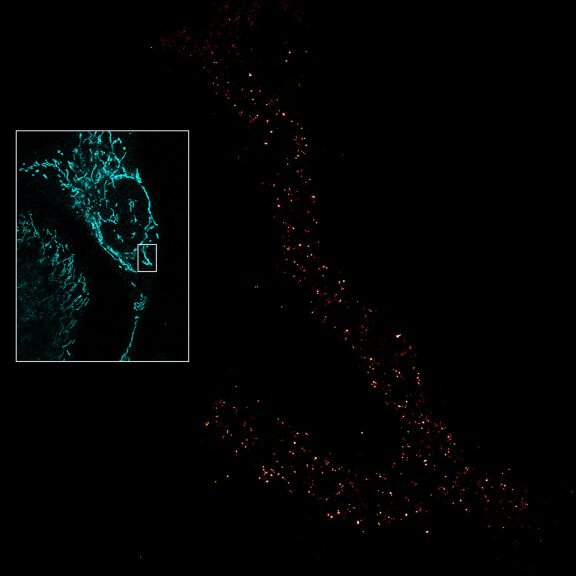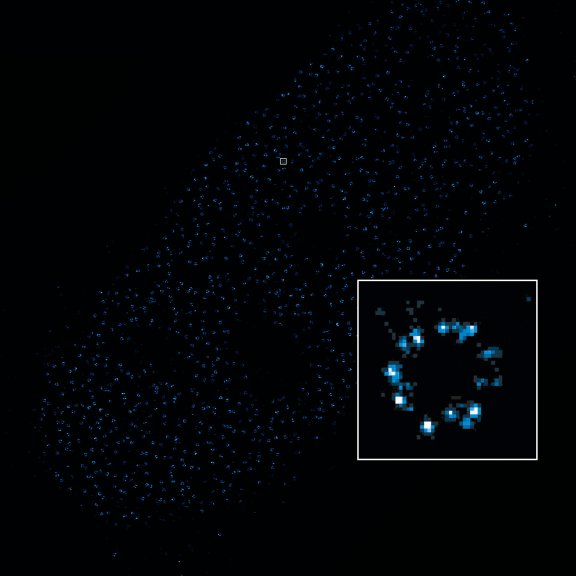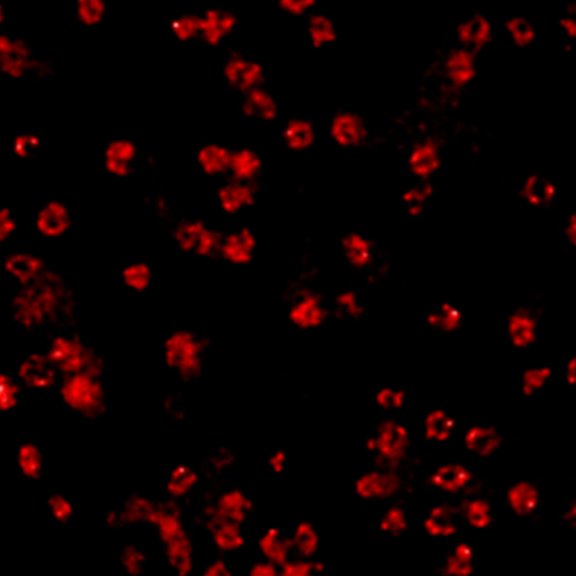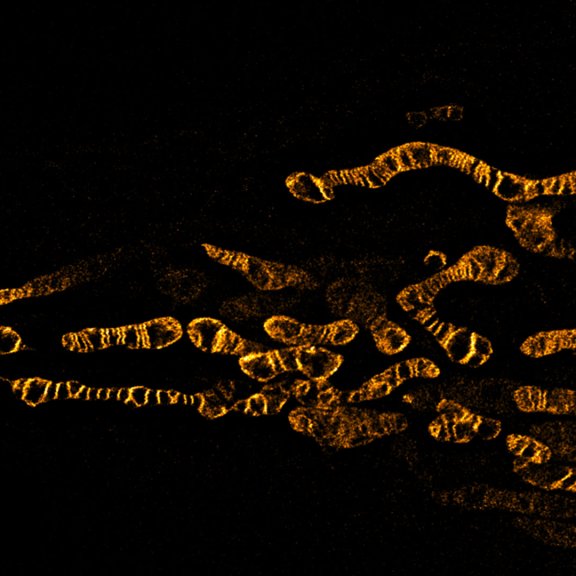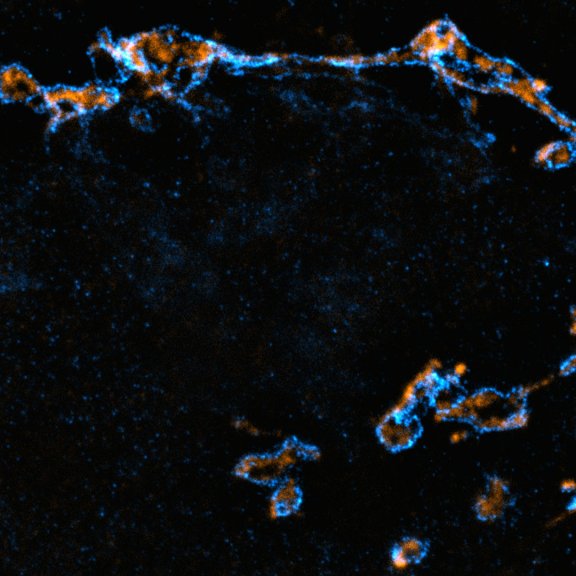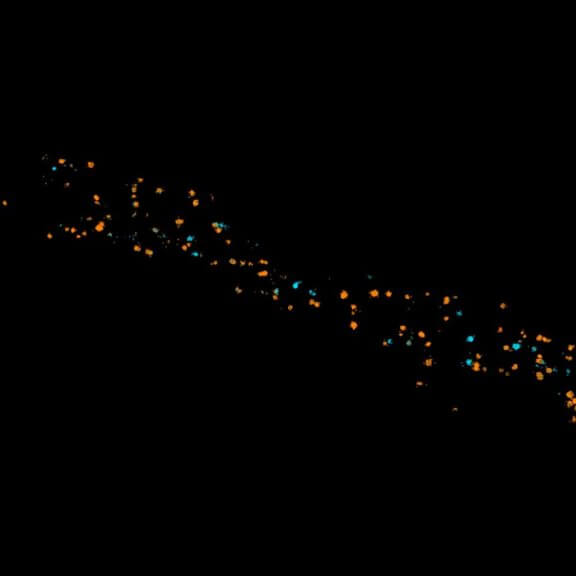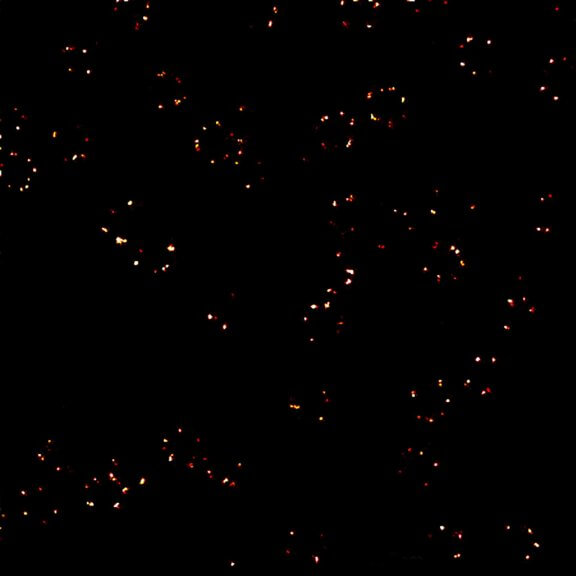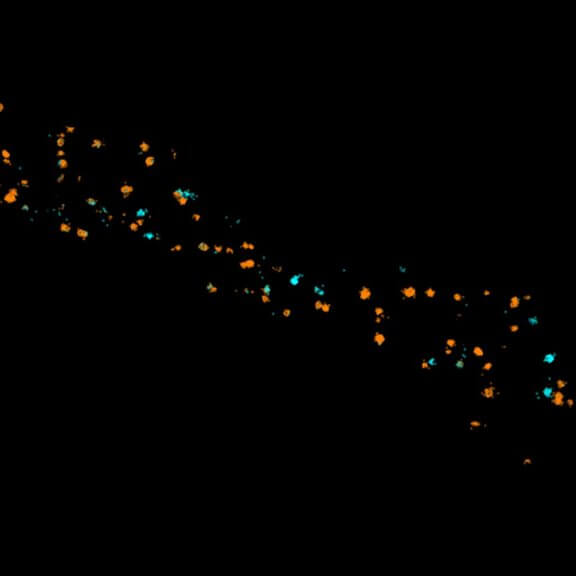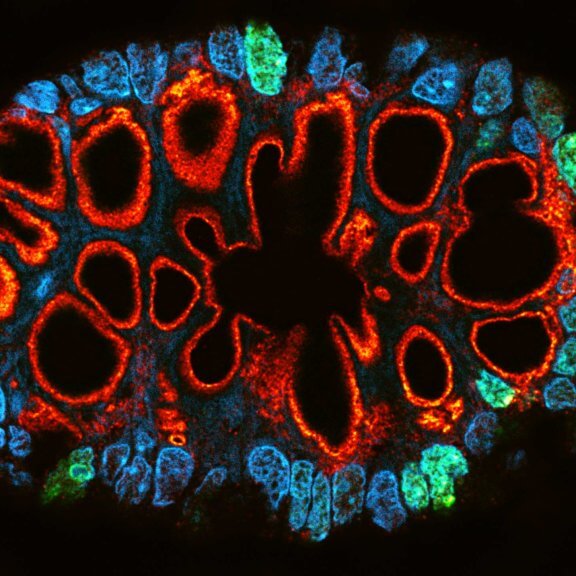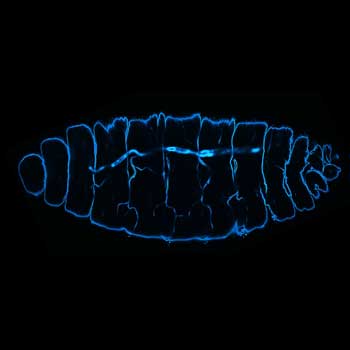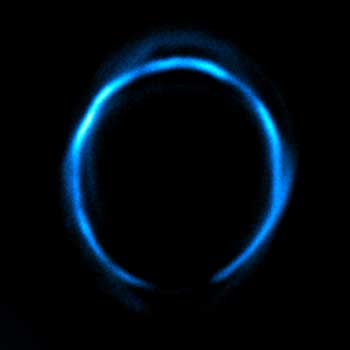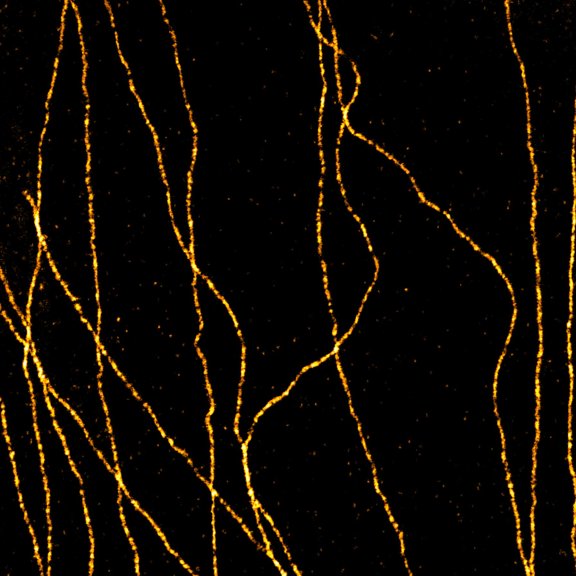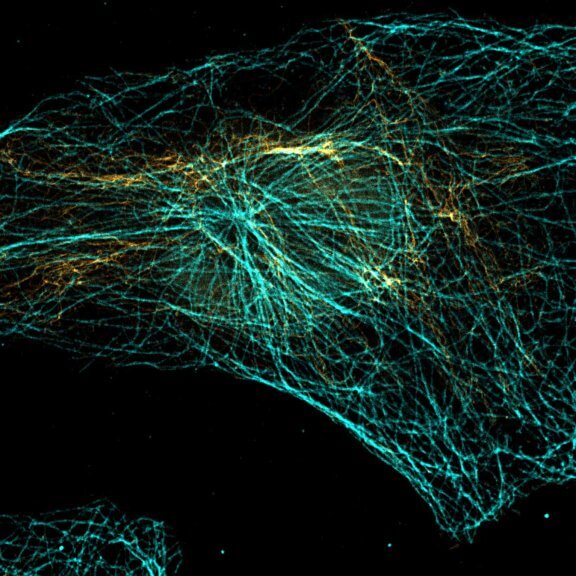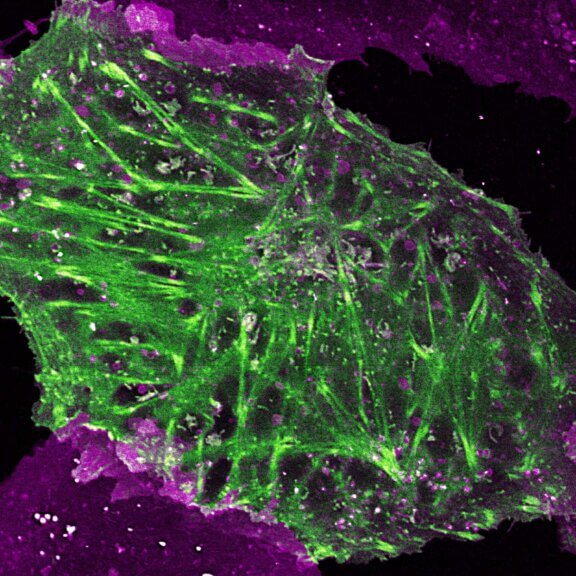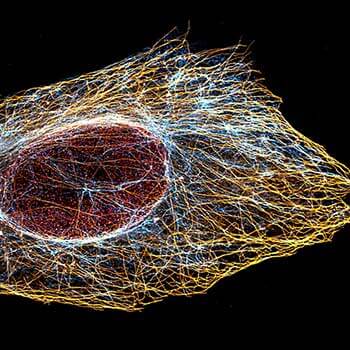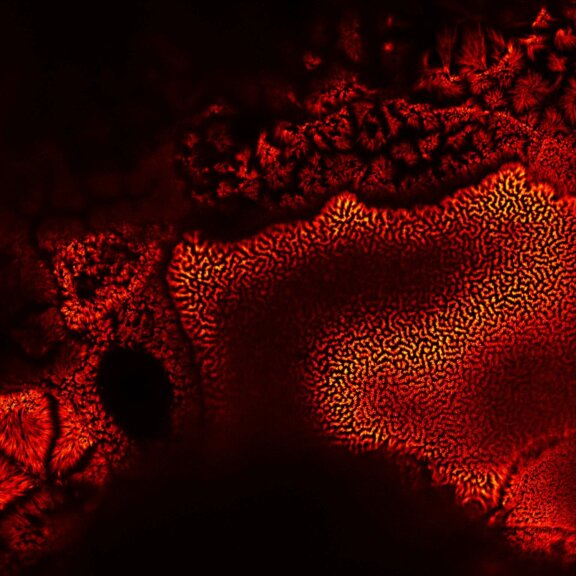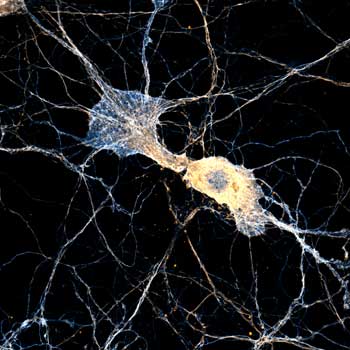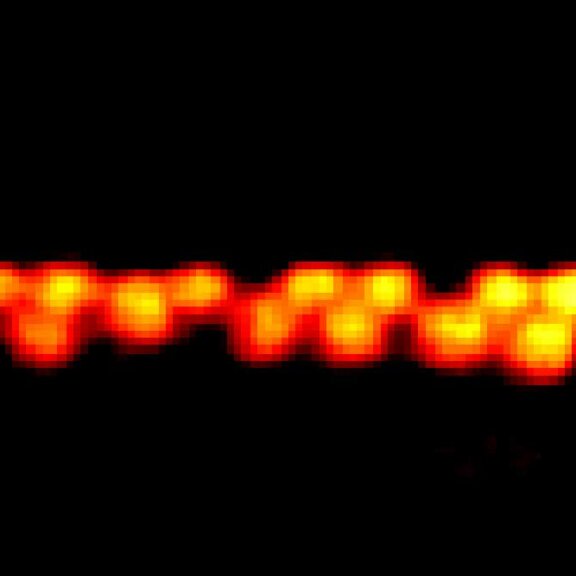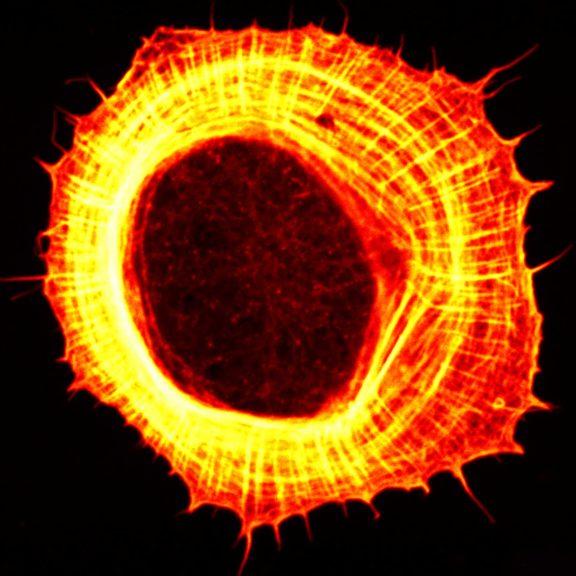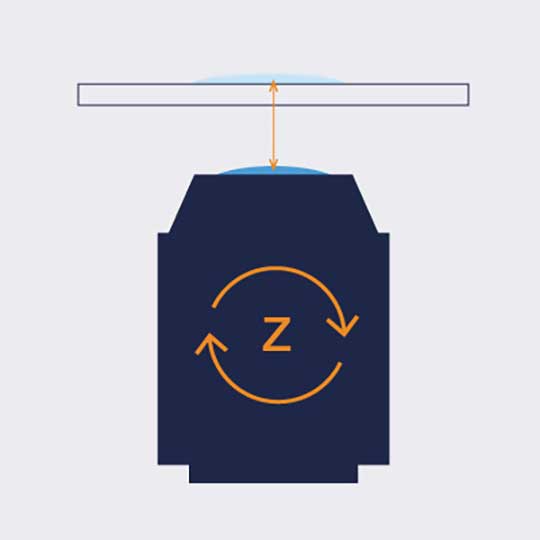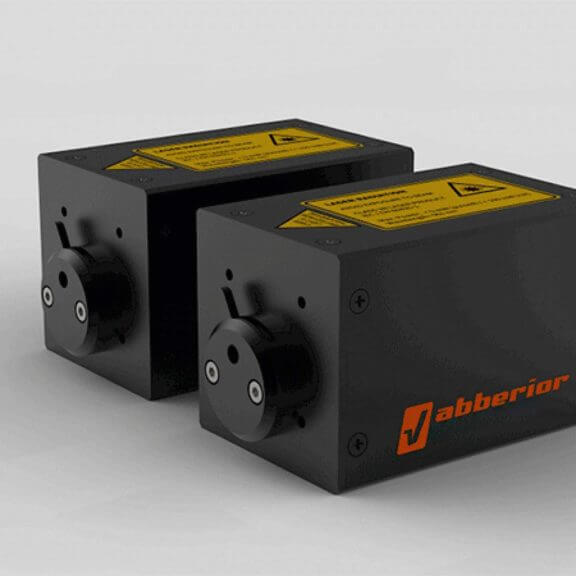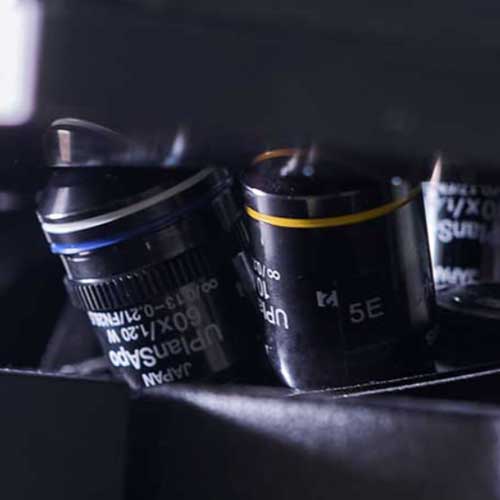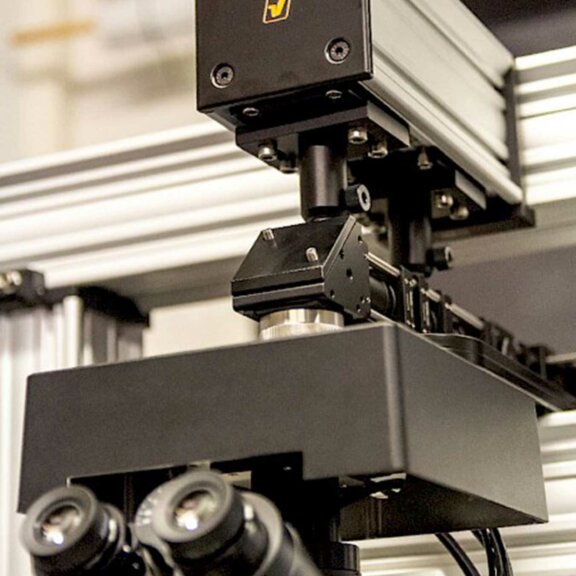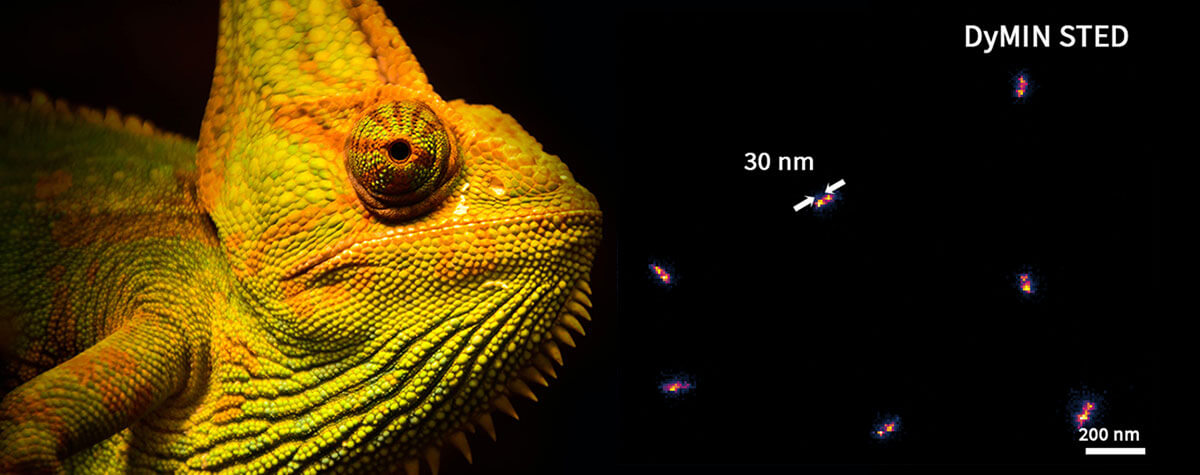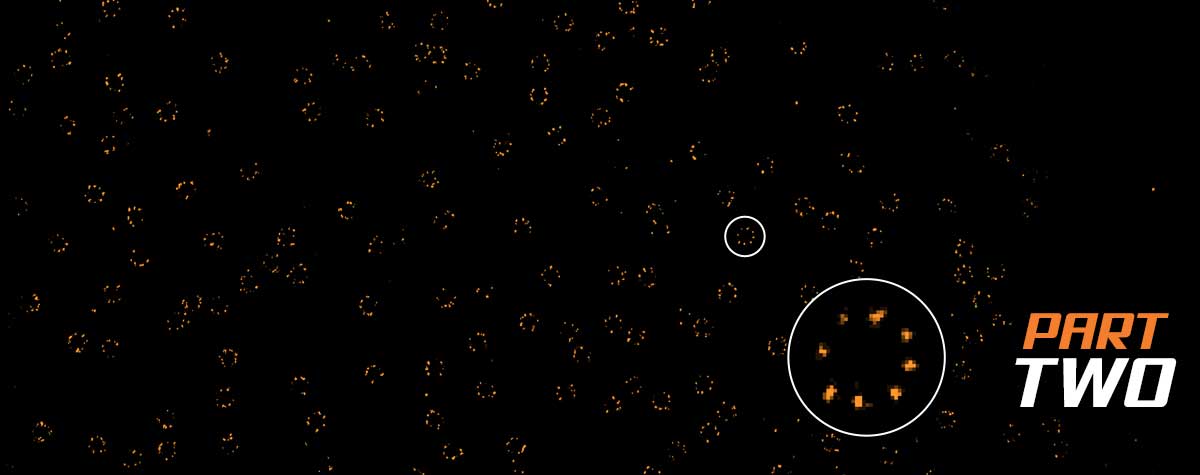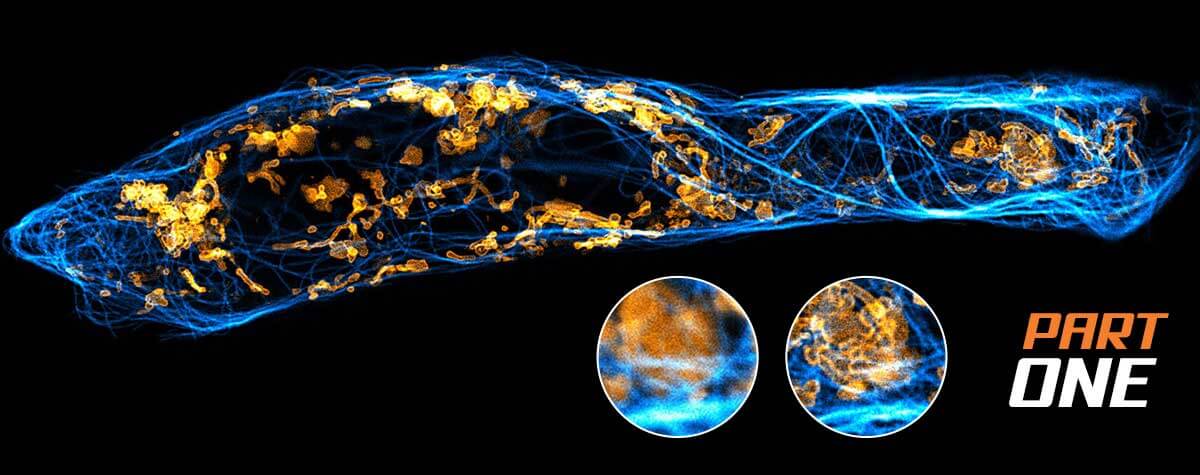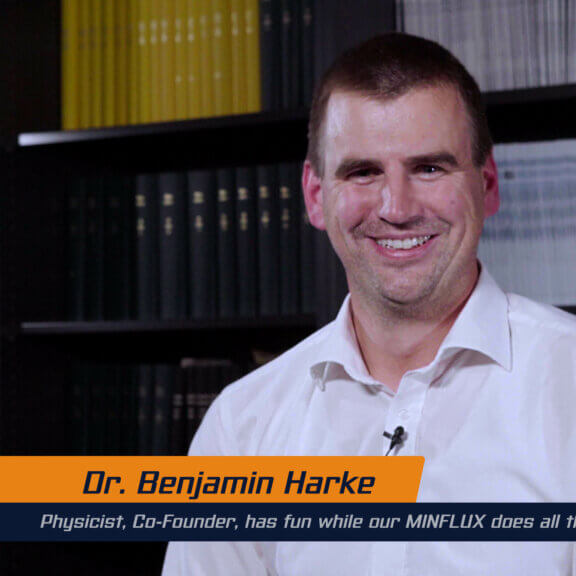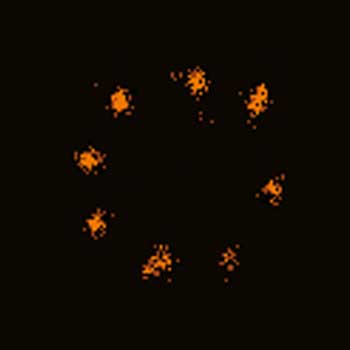Zooming in on cellular life – Cell Biology
FAQ Video 37

“How does TIMEBOW lifetime imaging work and why is MATRIX array detection a perfect match?”
Cell biology is one of the broadest research areas within molecular biology. Correspondingly diverse are the requirements for light microscopy as one of its pivotal experimental techniques. Cell cycle, cellular architecture and organization, communication and signal transduction, transport processes – every field poses special demands on staining and imaging.
For some purposes in cell biology, the resolution of a confocal microscope is sufficient, but special modules to reduce background signal or to analyze fluorescent lifetime may be required. In other cases, you will need superresolution microscopy like STED to capture relevant details beyond the diffraction limit, or MINFLUX to reach single-digit nanometer resolution and to track the movement of individual molecules in a living cell.
Whatever the need, abberior has the solution! We offer confocal and STED microscopes with superior performance as well as add-on modules tailored to your particular imaging demands. And we are the only manufacturer of MINFLUX, the fluorescent microscope with unsurpassed spatiotemporal resolution. Our product portfolio is completed by a comprehensive selection of fluorescent dyes and labels suitable for various applications.
Talk to a scientist >Cel(l)ebrities in focus
It’s virtually impossible to overestimate the complexity of what’s going on inside a cell. Multicolor staining is a way to visualize at least some of the countless subcellular structures. This four-color STED image shows Vero cells stained for F-actin (red, abberior STAR RED phalloidin), vimentin (cyan, STAR 460L), nuclear pore complexes (green, STAR ORANGE), and golgi (yellow, CF594). STAR ORANGE and CF594 were separated by their fluorescence lifetime with TIMEBOW imaging.
Test your sample >Cellfies for science
Fluorescence microscopy reveals the diversity of cellular life and landscapes. Organelles like mitochondria, peroxisomes, golgi, nucleus, or the ER, and structures such as the cytoskeleton, chromatin, membranes, vesicles – countless components may today be visualized under the microscope. And imaging beyond the diffraction limit with STED and MINFLUX reveals details never seen before. Our gallery takes you on a colorful journey through life in the microscopic world of cells.
Discover every little detail –
the best microscopes for cell biology
3D MINFLUX visualizes the shape of peroxisomes in all dimensions. The peroxisomal membrane protein PMP70 is labeled with abberior FLUX 647 in fixed mammalian cells, the z scale is color-coded. abberior offers both the microscopes and the dyes to stain and resolve countless cellular structures and processes. And the optics we developed for the high demands of superresolution STED microscopy also bring confocal images to a new level.
Get a demo >MINFLUX – unrivaled resolution and speed

The MINFLUX platform offers an unprecedented array of imaging possibilities and allows you to resolve structures as small as a molecule, along all three dimensions. This unmatched resolution capability combined with unprecedented speed reveals sample details never seen before and helps to dissect fast and dynamic cellular processes in space and time. MINFLUX is the world’s most powerful fluorescence microscope. Details >
INFINITY – forever cutting edge

The INFINITY platform is the most customizable platform for all things microscopy and may be adapted to your particular demands depending on what aspect of cell biology you are working on. INFINITY is always up to the challenge. Just tell us what you need and we will build you a customized, continuously upgradable system specialized for your research. Details >
MIRAVA POLYSCOPE – one for all and all for one

MIRAVA® is the first true POLYSCOPE®. Every resolution – from millimeters down to 3 nm – combined in a singularly unique system. MIRAVA unites four microscopy technologies to cover an unprecedented resolution spectrum, extending over several orders of magnitude from diffraction-limited imaging all the way to true molecular resolution. Our LiGHTBOX software allows beginners to intuitively arrive at a top-notch image within three clicks, while also giving experts full control over the instrument. Analyze cellular architecture and function in detail with MIRAVA! Details >
STEDYCON 2 – confocal, STED, and lifetime… WOW!

The STEDYCON upgrades your existing widefield microscope to a confocal, STED, and lifetime machine with a resolution down to 30 nm. All that’s required is a free camera port and a good objective lens. With its super-intuitive user interface, the STEDYCON provides an intelligent microscope platform that enables everyone to acquire superb superresolution images after only minutes of training. Define your cell experiment and obtain premium confocal and STED images at the push of a button! Details >
Enjoy
winning combinations
Every one of our modules adds another superpower to your microscope. When combined, they perform even better, like in this four-color staining of a fixed mammalian cell showing nuclear pores (NUP98, purple, abberior STAR RED), the golgi membrane (GM130, yellow, STAR 635), golgi medial rims (giantin, cyan, STAR ORANGE), and actin (gray, STAR 580 phalloidin). A single STED laser at 775 nm was used to achieve superresolution. STAR RED and STAR 635 as well as STAR ORANGE and STAR 580 were separated by their fluorescence lifetime with TIMEBOW, while MATRIX array detection physically removes background signal and increases resolution.
Ask for detailed information >Choose a superpower for your experiment – our modules
Every MINFLUX, INFINITY, and FACILITY microscope can be upgraded with modules to overcome the specific imaging challenges in your research. Do you need to reduce background signal? Do you want to separate dyes according to their fluorescence lifetime to expand your options in multicolor imaging? Or extent your choice of excitation and STED lasers? Our modules cover all these applications, and much more! And if you can’t find what you need on our website, get in touch with us, and we’ll develop it for you.
MATRIX Detector
Many eyes see more than one. The MATRIX detector drastically improves signal-to-background ratio, resolution, and dynamic range.
TIMEBOW Imaging
TIMEBOW lifetime imaging for stunning results at confocal and STED super-resolution.
FLEXPOSURE Illumination
Brings down the light dose on your sample and lables dramatically. Key ingredient for volume and live-cell superresolution.
RAYSHAPE Mirror
Dynamic aberration correction with a deformable mirror over about 200 µm z-range. 140 digital actuators adjust the mirror surface within milliseconds.
Custom Solutions
We offer solutions for even the most challenging applications. Everything that can be done, we will do.
Broaden your knowledge
of microscopes, dyes, and superresolution
What does it take to obtain a superresolution image like this one acquired with the STEDYCON and showing the golgi apparatus stained with abberior STAR 580 (cyan, GM130) and abberior STAR 635P (red, giantin)? What’s the difference between STED and other superresolution techniques like PALM and STORM? How does adaptive illumination protect your sample? Our knowledge base is your chance to close any gaps in fluorescence microscopy expertise you might have!
Tell me more >PALM and STORM are often used as synonyms, and in fact they have a lot in common. But there are slight differences that can be important for your application. And then there are other superresolution techniques, too – like STED and MINFLUX. Details >
Every technique that allows to observe cells is more or less invasive and fluorescence microscopy is no exception. Many imaging situations profit from a reduction in light dose as provided by FLEXPOSURE adaptive illumination. Details >
Why do superresolution microscopists love alpacas?

It is a very simple yet very important fact: the localization precision of any superresolution microscope can only be as good as the size of the fluorescent staining allows. In other words, when your fluorescent dye is too big or too far away from the protein you want to label, you will never be able to reach a resolution that is higher than this offset. The good news is: there are ways to reduce the offset between target protein and fluorescent label. And one of these are nanobodies. Details >
For all the talk about criteria and definitions, measuring the resolution of a microscope is more nuanced than you’d think. The scales at which microscopes operate today are subject to noise and background that obscure and distort signals. What you use for the measurement can make a big difference. The second article in our “Resolution” series. Details >
STEDYCON: ease-of-use in a shoebox

A sleek, black-and-orange box transforms your widefield microscope into a confocal and a superresolution STED instrument and your exploration of subcellular structures into a seamless, discovery-rich experience. Carefully designed with masterly engineering, STEDYCON breaks the stereotype of the finicky, hard-to-use scope. It opens new possibilities at the press of a button for any user and almost any location. How does it do it? The secret’s in the box. Details >
Are you surprised that the very nature of light caps the resolution that we can achieve in microscope images? Luckily, there are workarounds to this limit. These workarounds push the amount of detail in an image by manipulating precisely where and when fluorophores are allowed to emit. As such, they provide us with a completely new set of tools to shrink the distance between two points while still being able to resolve them. Details >














